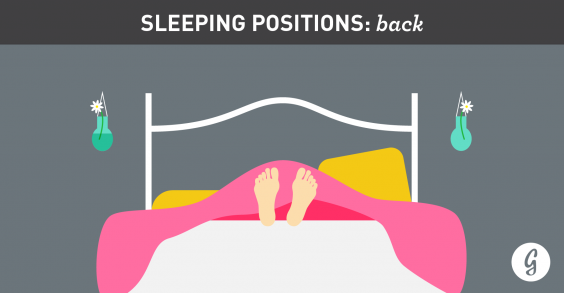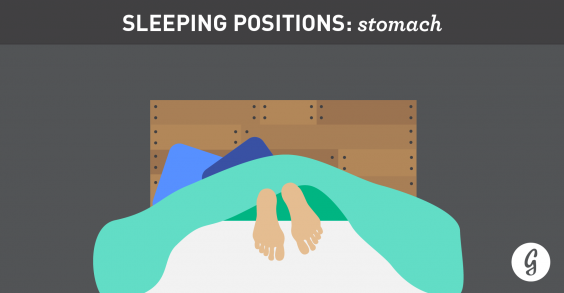The Best (and Worst) Positions for Sleeping
![]() Reviewed by Rifthy Moulana
on
11:00 PM
Rating: 5
Reviewed by Rifthy Moulana
on
11:00 PM
Rating: 5
Popular Posts
-
YOU MIGHT ALSO LIKE 45 Benefits of Exercise and Healthy Eating That No One Talks About READ Ever get the cold shoulder for not par...
-
Working hard or hardly working? Tweet Tumblr Alice Mongkongllite / BuzzFeed 1. Stock up on frozen v...
-
There is a lot of confusion when it comes to health and nutrition. People, even qualified experts, often seem to have the exact...
-
29 Amazing Literary Magazines You Need To Be Reading And you thought your reading list was long already… 1. Fields magazine...
-
A muscle cramp is a very common thing. It can happen in your leg, arm, back or elsewhere. Since muscle cramps often come on suddenly, th...
-
Six ways to lose weight without dieting! 7 Zee Media Bureau New Delhi: Lose weight without dietin...
-
US&UK WARMLY WELCOME For something so simple (even babies do it), sleep isn’t such an easy thing. Both too little and too much ...
-
This Food Test Will Determine If You’re Actually From Minnesota Tweet Tumblr pearsonscandy.com ...
-
YOU MIGHT ALSO LIKE When's the Best Time to Shower: Morning or Night? READ Washing your face is one of those things we assume ...
-
Drinking water the correct way! Zee Media Bureau Yes, we all know the amazing benefits of water. But,...
Download
Find us on facebook
Popular Posts
-
YOU MIGHT ALSO LIKE 45 Benefits of Exercise and Healthy Eating That No One Talks About READ Ever get the cold shoulder for not par...
-
Working hard or hardly working? Tweet Tumblr Alice Mongkongllite / BuzzFeed 1. Stock up on frozen v...
-
There is a lot of confusion when it comes to health and nutrition. People, even qualified experts, often seem to have the exact...
-
29 Amazing Literary Magazines You Need To Be Reading And you thought your reading list was long already… 1. Fields magazine...
-
A muscle cramp is a very common thing. It can happen in your leg, arm, back or elsewhere. Since muscle cramps often come on suddenly, th...
-
Six ways to lose weight without dieting! 7 Zee Media Bureau New Delhi: Lose weight without dietin...
-
US&UK WARMLY WELCOME For something so simple (even babies do it), sleep isn’t such an easy thing. Both too little and too much ...
-
This Food Test Will Determine If You’re Actually From Minnesota Tweet Tumblr pearsonscandy.com ...
-
YOU MIGHT ALSO LIKE When's the Best Time to Shower: Morning or Night? READ Washing your face is one of those things we assume ...
-
Drinking water the correct way! Zee Media Bureau Yes, we all know the amazing benefits of water. But,...
Blog Archive
-
▼
2016
(15)
-
▼
February
(15)
- Six ways to lose weight without dieting!
- Drinking water the correct way!
- How to do your own facial
- The Best (and Worst) Positions for Sleeping
- The Best Way to Wash Your Face, According to Experts
- What to Say When People Undermine Your Healthy Cho...
- This Food Test Will Determine If You’re Actually F...
- 29 Amazing Literary Magazines You Need To Be Reading
- 19 Genius Health Tips Lazy People Will Appreciate
- Advantages of eating cabbage – benefits of cabbage...
- 26 Weight Loss Tips That Are Actually Evidence-Based
- 27 Health and Nutrition Tips That Are Actually Evi...
- A muscle cramp is a very common thing. It can ...
- Say hello to pearly whites with these natural teet...
- 5 Homemade Cures For Common Cold & Cough
-
▼
February
(15)





0 comments:
Post a Comment